#south west asia
Text
We ask your questions so you don’t have to! Submit your questions to have them posted anonymously as polls.
#polls#incognito polls#anonymous#tumblr polls#tumblr users#questions#asian#asia#east asian#southeast asian#south asian#central asian#west asian#demographics#geography#polls about the world#submitted nov 4
1K notes
·
View notes
Text




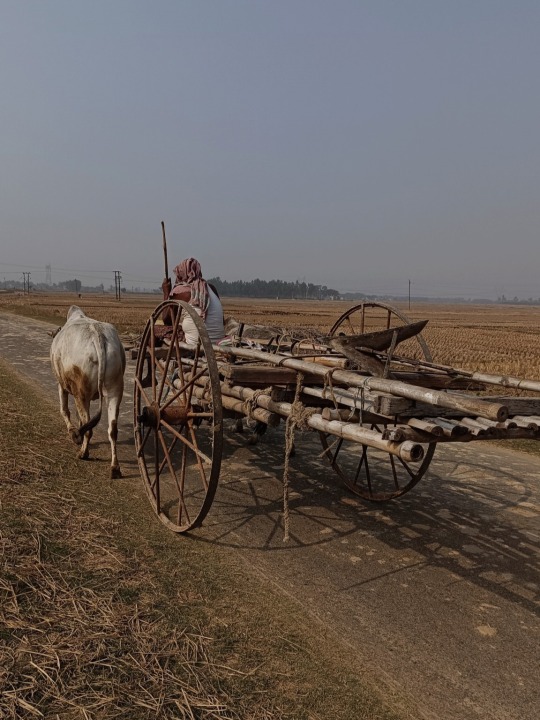

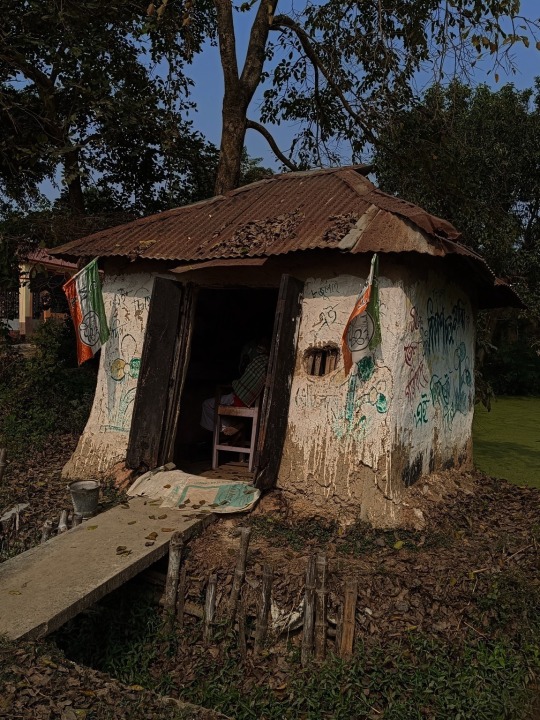



Photographs from my road trip across rural Bengal.
#everything was so golden! the soil the sunlight the hay etc. maybe because its that time of the harvest season#but i see why rabindranath wrote amar shonar bangla he wasnt being metaphorical#my photography#original photography#bangla tag#desi tag#desi aesthetic#desi tumblr#desiblr#south asia#south asian#india#west bengal#rural#rural architecture#street photography#nature photography#p
729 notes
·
View notes
Text
Seeing fan discussions about Blue Eye Samurai and especially Mizu's identity is so annoying sometimes. So let me just talk about it real quick.
First off, I have to emphasise that different interpretations of the text are always important when discussing fiction. That's how the whole branch of literary studies came to be, and what literary criticism and analysis is all about: people would each have their own interpretation of what the text is saying, each person applying a different lens or theory through which to approach the text (ie. queer theory, feminist theory, reader response theory, postcolonial theory, etc) when analysing it. And while yes, you can just take everything the authors say as gospel, strictly doing so would leave little room for further analysis and subjective interpretation, and both of these are absolutely necessary when having any meaningful discussion about a piece of media.
With that being said, when discussing Blue Eye Samurai, and Mizu's character in particular, I always see people only ever interpret her through a queer lens. Because when discussing themes of identity, yes, a queer reading can definitely apply, and in Mizu's story, queer themes are definitely present. Mizu has to hide her body and do her best to pass in a cisheteronormative society; she presents as a man 99% of the time and is shown to be more comfortable in men's spaces (sword-fighting) than in female spaces (homemaking). Thus, there's nothing wrong with a queer reading at all. Hell, some queer theorists interpret Jo March from Little Women as transmasc and that's totally valid, because like all analyses, they are subjective and argumentative; you have the choice to agree with an interpretation or you can oppose it and form your own.
To that end, I know many are equally adamant that Mizu is strictly a woman, and that's also also a completely valid reading of the text, and aligns with the canon "Word of God", as the creators' intention was to make her a woman. And certainly, feminist themes in the show are undeniably present and greatly colour the narrative, and Episode 4 & 5 are the clearest demonstrations of this: Mizu's protectiveness of Madame Kaji and her girls, Mizu's trauma after killing Kinuyo, her line to Akemi about how little options women have in life, and the way her husband had scorned her for being more capable than him in battle.
I myself personally fall into the camp of Mizu leaning towards womanhood, so i tend to prefer to use she/her pronouns for her, though I don't think she's strictly a cis woman, so I do still interpret her under the non-binary umbrella. But that's besides my point.
My gripe here, and the thing that spurred me to write this post, is that rarely does this fandom even touch upon the more predominant themes of colonialism and postcolonial identities within the story. So it definitely irks me when people say that the show presenting Mizu being cishet is "boring." While it's completely fine to have your opinion and to want queer rep, a statement like that just feels dismissive of the rest of the representation that the show has to offer. And it's frustrating because I know why this is a prevalent sentiment; because fandom culture is usually very white, so of course a majority of the fandom places greater value on a queer narrative (that aligns only with Western ideas of queerness) over a postcolonial, non-Western narrative.
And that relates to how, I feel, people tend to forget, or perhaps just downplay, that the crux of Mizu's internal conflict and her struggle to survive is due to her being mixed-race.
Because while she can blend in rather seamlessly into male society by binding and dressing in men's clothing and lowering her voice and being the best goddamn swordsman there is, she cannot hide her blue eyes. Even with her glasses, you can still see the colour of her eyes from her side profile, and her glasses are constantly thrown off her face in battle. Her blue eyes are the central point to her marginalisation and Otherness within a hegemonic society. It's why everyone calls her ugly or a monster or a demon or deformed; just because she looks different. She is both white and Japanese but accepted in neither societies. Her deepest hatred of herself stems primarily from this hybridised and alienated identity. It's the whole reason why she's so intent on revenge and started learning the way of the sword in the first place; not to fit in better as a man, but to kill the white men who made her this way. These things are intrinsic to her character and to her arc.
Thus, to refuse to engage with these themes and dismiss the importance of how the representation of her racial Otherness speaks to themes of colonialism and racial oppression just feels tone-deaf to the show's message. Because even if Mizu is a cishet woman in canon, that doesn't make her story any less important, because while you as a white queer person living in the West may feel unrepresented, it is still giving a voice to the stories of people of colour, mixed-race folks, and the myriad of marginalised racial/ethnic/cultural groups in non-Western societies.
#blue eye samurai#mizu blue eye samurai#fandom critical#blue eye samurai meta#wank.mp3#shut up haydar#fandom.rtf#this is a bit of rant but the prevalent whiteness of fandom in general just gets on my nerves i'm sorry#giving me flashbacks to a:tla fandom fr cuz it's the same shit! people love to devalue the stories of non-white non-western identities#also to be clear i am a southeast asian living in southeast asia and similar to mizu i am often alienated for having mixed ethnic ancestry#and even for speaking english (bcs my granddad served the fuckin. british colonials. so my fam speaks mostly in english)#cuz where im from it's still extremely hegemonic racist patriarchal misogynistic homophobic like the setting in the show#so like even though the story is set in historical japan and may seem far-removed from the experiences of a US or european audience#those of us outside the west and in the global south still face a lot of the struggles that mizu goes through till this very day#so please dont just dismiss that. it feels incredibly tone-deaf#okay rant over
55 notes
·
View notes
Note
Is North Korea actually bad
It is not what you have been told it is. There are many bad things about the government of North Korea, there are many bad things about those running it, but it is not what you have been told it is.
#Before passing judgment on eastern countries#keep in mind that it is in the best interest of western powers for you to fear and despise them#you are not immune to propaganda#I am not fully qualified to give you a detailed overview on an entire country I don’t live in though#All I can say is that you see what the west says about the Middle East and south east Asia and Latin America and much of Africa#when they are dishonest about so many countries already#why expect honesty from them about a political enemy
29 notes
·
View notes
Text
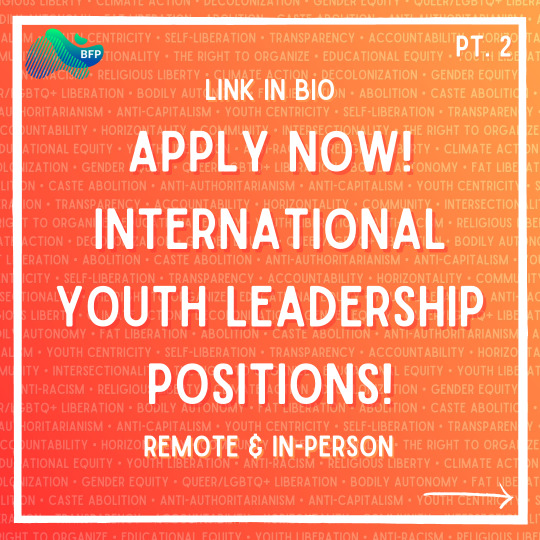

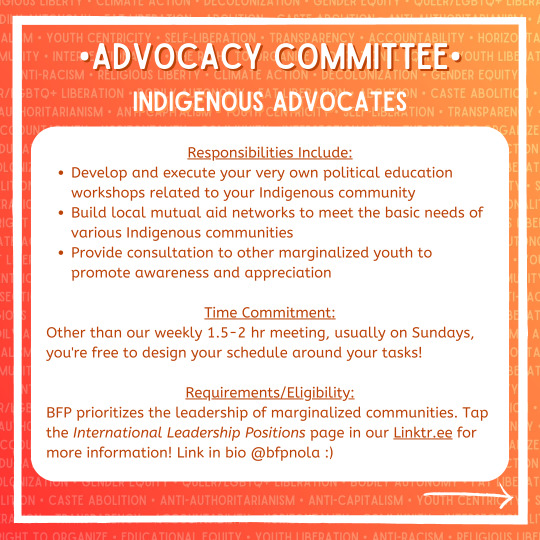
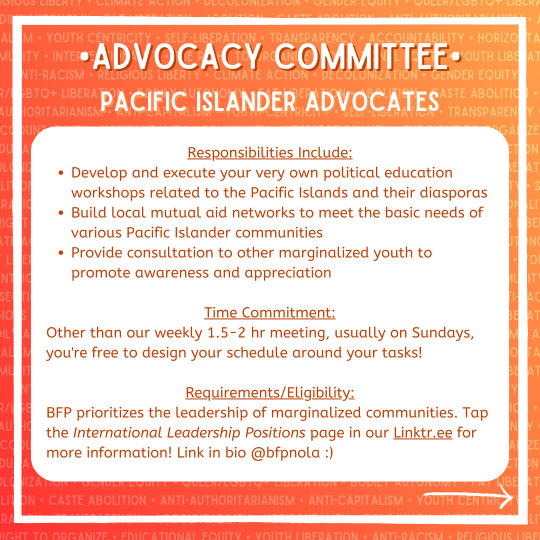


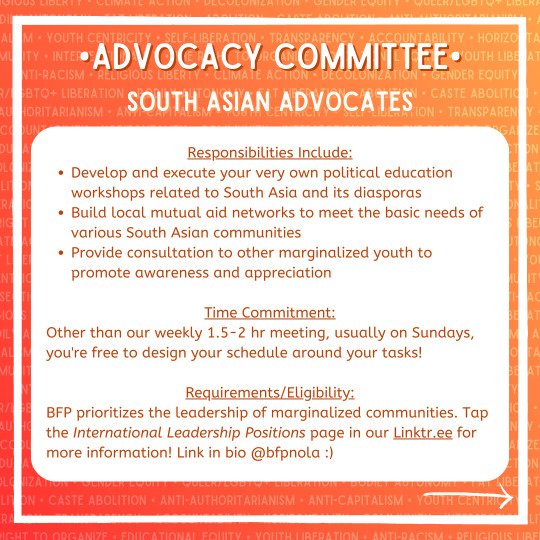


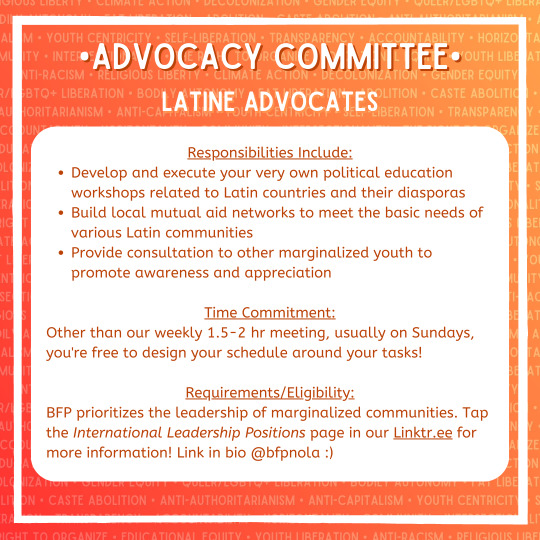
Hey! We're back with part 2! Better Future Program (@bfpnola) is officially looking for youth volunteers between the ages of 14 and 25 for our Advocacy Committee. Don't see a role that fits your identity or beliefs? Don't worry! We've got SO MANY opportunities, we had to split them up across multiple posts! Feel free to check our Linktr.ee for more positions or our "Apply Now!" highlight on Instagram in the coming weeks!
And if you don’t know who we are? Welcome! BFP is Black-, queer-, and woman-owned nonprofit, entirely run by youth! Since 2016, we’ve been accepting volunteers not just from Bulbancha (so-called New Orleans, Louisiana), but WORLDWIDE! Our mission is to globally expand peer-led political education, support, and imagination for marginalized youth!
To fulfill this goal, we offer over 3,000 free resources through our Liberation Library, design and execute mutual aid-based projects, and offer the safe space young activists need to ask questions and grow. If this sounds like something you’d be interested in, check out our International Youth Leadership Positions page in our bio!
Image description below.
[ID: All slides share the same background. There is a repeating list of BFP’s guiding principles and core beliefs in translucent, all-white, capitalized letters. BFP’s guiding principles include youth-centricity, self-liberation, transparency, accountability, horizontality, community, and intersectionality. BFP’s core beliefs include the right to organize, educational equity, youth liberation, anti-racism, religious liberty, disability justice, climate action, decolonization, gender equity, queer/LGBTQ+ liberation, bodily autonomy, fat liberation, abolition, caste abolition, anti-authoritarianism, and anti-capitalism. A burnt orange to amber gradient overlays this list. A bold, white square frames the image with a white arrow pointing right in the bottom right corner.
Slide 1 reads: “LINK IN BIO. APPLY NOW! INTERNATIONAL YOUTH LEADERSHIP POSITIONS! REMOTE & IN-PERSON.” There is a BFP logo in the lefthand corner and the words “Part Two” in the righthand corner, as this is the first of multiple posts showcasing open leadership positions.
Slide 2 reads: "Advocacy Committee: Africana Advocates
Responsibilities Include:
Develop and execute your very own political education workshops related to African countries and their diasporas
Build local mutual aid networks to meet the basic needs of those of African descent
Provide consultation to other marginalized youth to promote awareness and appreciation
Time Commitment:
Other than our weekly 1.5-2 hr meeting, usually on Sundays, you're free to design your schedule around your tasks!
Requirements/Eligibility:
BFP prioritizes the leadership of marginalized communities. Tap the International Leadership Positions page in our Linktr.ee for more information! Link in bio @bfpnola :)"
Slide 3 reads: "Advocacy Committee: Indigenous Advocates
Responsibilities Include:
Develop and execute your very own political education workshops related to your Indigenous community
Build local mutual aid networks to meet the basic needs of various Indigenous communities
Provide consultation to other marginalized youth to promote awareness and appreciation
Time Commitment:
Other than our weekly 1.5-2 hr meeting, usually on Sundays, you're free to design your schedule around your tasks!
Requirements/Eligibility:
BFP prioritizes the leadership of marginalized communities. Tap the International Leadership Positions page in our Linktr.ee for more information! Link in bio @bfpnola :)"
Slide 4 reads: "Advocacy Committee: Pacific Islander Advocates
Responsibilities Include:
Develop and execute your very own political education workshops related to the Pacific Islands and their diasporas
Build local mutual aid networks to meet the basic needs of various Pacific Islander communities
Provide consultation to other marginalized youth to promote awareness and appreciation
Time Commitment:
Other than our weekly 1.5-2 hr meeting, usually on Sundays, you're free to design your schedule around your tasks!
Requirements/Eligibility:
BFP prioritizes the leadership of marginalized communities. Tap the International Leadership Positions page in our Linktr.ee for more information! Link in bio @bfpnola :)"
Slide 5 reads: "Advocacy Committee: Central Asian Advocates
Responsibilities Include:
Develop and execute your very own political education workshops related to Central Asia and its diasporas
Build local mutual aid networks to meet the basic needs of various Central Asian communities
Provide consultation to other marginalized youth to promote awareness and appreciation
Time Commitment:
Other than our weekly 1.5-2 hr meeting, usually on Sundays, you're free to design your schedule around your tasks!
Requirements/Eligibility:
BFP prioritizes the leadership of marginalized communities. Tap the International Leadership Positions page in our Linktr.ee for more information! Link in bio @bfpnola :)"
Slide 6 reads: "Advocacy Committee: East Asian Advocates
Responsibilities Include:
Develop and execute your very own political education workshops related to East Asia and its diasporas
Build local mutual aid networks to meet the basic needs of various East Asian communities
Provide consultation to other marginalized youth to promote awareness and appreciation
Time Commitment:
Other than our weekly 1.5-2 hr meeting, usually on Sundays, you're free to design your schedule around your tasks!
Requirements/Eligibility:
BFP prioritizes the leadership of marginalized communities. Tap the International Leadership Positions page in our Linktr.ee for more information! Link in bio @bfpnola :)"
Slide 7 reads: "Advocacy Committee: South Asian Advocates
Responsibilities Include:
Develop and execute your very own political education workshops related to South Asia and its diasporas
Build local mutual aid networks to meet the basic needs of various South Asian communities
Provide consultation to other marginalized youth to promote awareness and appreciation
Time Commitment:
Other than our weekly 1.5-2 hr meeting, usually on Sundays, you're free to design your schedule around your tasks!
Requirements/Eligibility:
BFP prioritizes the leadership of marginalized communities. Tap the International Leadership Positions page in our Linktr.ee for more information! Link in bio @bfpnola :)"
Slide 8 reads: "Advocacy Committee: Southeast Asian Advocates
Responsibilities Include:
Develop and execute your very own political education workshops related to Southeast Asia and its diasporas
Build local mutual aid networks to meet the basic needs of various Southeast Asian communities
Provide consultation to other marginalized youth to promote awareness and appreciation
Time Commitment:
Other than our weekly 1.5-2 hr meeting, usually on Sundays, you're free to design your schedule around your tasks!
Requirements/Eligibility:
BFP prioritizes the leadership of marginalized communities. Tap the International Leadership Positions page in our Linktr.ee for more information! Link in bio @bfpnola :)"
Slide 9 reads: "Advocacy Committee: West Asian Advocates
Responsibilities Include:
Develop and execute your very own political education workshops related to West Asia and its diasporas
Build local mutual aid networks to meet the basic needs of various West Asian communities
Provide consultation to other marginalized youth to promote awareness and appreciation
Time Commitment:
Other than our weekly 1.5-2 hr meeting, usually on Sundays, you're free to design your schedule around your tasks!
Requirements/Eligibility:
BFP prioritizes the leadership of marginalized communities. Tap the International Leadership Positions page in our Linktr.ee for more information! Link in bio @bfpnola :)"
Slide 10 reads: "Advocacy Committee: Latine Advocates
Responsibilities Include:
Develop and execute your very own political education workshops related to Latin countries and their diasporas
Build local mutual aid networks to meet the basic needs of various Latin communities
Provide consultation to other marginalized youth to promote awareness and appreciation
Time Commitment:
Other than our weekly 1.5-2 hr meeting, usually on Sundays, you're free to design your schedule around your tasks!
Requirements/Eligibility:
BFP prioritizes the leadership of marginalized communities. Tap the International Leadership Positions page in our Linktr.ee for more information! Link in bio @bfpnola :)"
/End ID.]
#reaux speaks#hiring#volunteer#youth activism#african#african diaspora#african american#black power#indigenous#aboriginal#first nations#native american#pacific islander#central asia#west asia#south asia#southeast asia#east asia#latine#latinx#chicano#advocacy#youth#high school#middle school#university#remote#in person#hybrid#abolition
76 notes
·
View notes
Text
On May 28, 1914, the Institut für Schiffs-und Tropenkrankheiten (Institute for Maritime and Tropical Diseases, ISTK) in Hamburg began operations in a complex of new brick buildings on the bank of the Elb. The buildings were designed by Fritz Schumacher, who had become the Head of Hamburg’s building department (Leiter des Hochbauamtes) in 1909 after a “flood of architectural projects” accumulated following the industrialization of the harbor in the 1880s and the “new housing and working conditions” that followed. The ISTK was one of these projects, connected to the port by its [...] mission: to research and heal tropical illnesses; [...] to support the Hamburg Port [...]; and to support endeavors of the German Empire overseas.
First established in 1900 by Bernhard Nocht, chief of the Port Medical Service, the ISTK originally operated out of an existing building, but by 1909, when the Hamburg Colonial Institute became its parent organization (and Schumacher was hired by the Hamburg Senate), the operations of the ISTK had outgrown [...]. [I]ts commission by the city was an opportunity for Schumacher to show how he could contribute to guiding the city’s economic and architectural growth in tandem, and for Nocht, an opportunity to establish an unprecedented spatial paradigm for the field of Tropical Medicine that anchored the new frontier of science in the German Empire. [...]
[There was a] shared drive to contribute to the [...] wealth of Hamburg within the context of its expanding global network [...]. [E]ach discipline [...] architecture and medicine were participating in a shared [...] discursive operation. [...]
---
The brick used on the ISTK façades was key to Schumacher’s larger Städtebau plan for Hamburg, which envisioned the city as a vehicle for a “harmonious” synthesis between aesthetics and economy. [...] For Schumacher, brick [was significantly preferable] [...]. Used by [...] Hamburg architects [over the past few decades], who acquired their penchant for neo-gothic brickwork at the Hanover school, brick had both a historical presence and aesthetic pedigree in Hamburg [...]. [T]his material had already been used in Die Speicherstadt, a warehouse district in Hamburg where unequal social conditions had only grown more exacerbated [...]. Die Speicherstadt was constructed in three phases [beginning] in 1883 [...]. By serving the port, the warehouses facilitated the expansion and security of Hamburg’s wealth. [...] Yet the collective profits accrued to the city by these buildings [...] did not increase economic prosperity and social equity for all. [...] [A] residential area for harbor workers was demolished to make way for the warehouses. After the contract for the port expansion was negotiated in 1881, over 20,000 people were pushed out of their homes and into adjacent areas of the city, which soon became overcrowded [...]. In turn, these [...] areas of the city [...] were the worst hit by the Hamburg cholera epidemic of 1892, the most devastating in Europe that year. The 1892 cholera epidemic [...] articulated the growing inability of the Hamburg Senate, comprising the city’s elite, to manage class relationships [...] [in such] a city that was explicitly run by and for the merchant class [...].
In Hamburg, the response to such an ugly disease of the masses was the enforcement of quarantine methods that pushed the working class into the suburbs, isolated immigrants on an island, and separated the sick according to racial identity.
In partnership with the German Empire, Hamburg established new hygiene institutions in the city, including the Port Medical Service (a progenitor of the ISTK). [...] [T]he discourse of [creating the school for tropical medicine] centered around city building and nation building, brick by brick, mark by mark.
---
Just as the exterior condition of the building was, for Schumacher, part of a much larger plan for the city, the program of the building and its interior were part of the German Empire and Tropical Medicine’s much larger interest in controlling the health and wealth of its nation and colonies. [...]
Yet the establishment of the ISTK marked a critical shift in medical thinking [...]. And while the ISTK was not the only institution in Europe to form around the conception and perceived threat of tropical diseases, it was the first to build a facility specifically to support their “exploration and combat” in lockstep, as Nocht described it.
The field of Tropical Medicine had been established in Germany by the very same journal Nocht published his overview of the ISTK. The Archiv für Schiffs- und Tropen-Hygiene unter besonderer Berücksichtigung der Pathologie und Therapie was first published in 1897, the same year that the German Empire claimed Kiaochow (northeast China) and about two years after it claimed Southwest Africa (Namibia), Cameroon, Togo, East Africa (Tanzania, Burundi, Rwanda), New Guinea (today the northern part of Papua New Guinea), and the Marshall Islands; two years later, it would also claim the Caroline Islands, Palau, Mariana Islands (today Micronesia), and Samoa (today Western Samoa).
---
The inaugural journal [...] marked a paradigm shift [...]. In his opening letter, the editor stated that the aim of Tropical Medicine is to “provide the white race with a home in the tropics.” [...]
As part of the institute’s agenda to support the expansion of the Empire through teaching and development [...], members of the ISTK contributed to the Deutsches Kolonial Lexikon, a three-volume series completed in 1914 (in the same year as the new ISTK buildings) and published in 1920. The three volumes contained maps of the colonies coded to show the areas that were considered “healthy” for Europeans, along with recommended building guidelines for hospitals in the tropics. [...] "Natives" were given separate facilities [...]. The hospital at the ISTK was similarly divided according to identity. An essentializing belief in “intrinsic factors” determined by skin color, constitutive to Tropical Medicine, materialized in the building’s circulation. Potential patients were assessed in the main building to determine their next destination in the hospital. A room labeled “Farbige” (colored) - visible in both Nocht and Schumacher’s publications - shows that the hospital segregated people of color from whites. [...]
---
Despite belonging to two different disciplines [medicine and architecture], both Nocht and Schumacher’s publications articulate an understanding of health [...] that is linked to concepts of identity separating white upper-class German Europeans from others. [In] Hamburg [...] recent growth of the shipping industry and overt engagement of the German Empire in colonialism brought even more distant global connections to its port. For Schumacher, Hamburg’s presence in a global network meant it needed to strengthen its local identity and economy [by purposefully seeking to showcase "traditional" northern German neo-gothic brickwork while elevating local brick industry] lest it grow too far from its roots. In the case of Tropical Medicine at the ISTK, the “tropics” seemed to act as a foil for the European identity - a constructed category through which the European identity could redescribe itself by exclusion [...].
What it meant to be sick or healthy was taken up by both medicine and architecture - [...] neither in a vacuum.
---
All text above by: Carrie Bly. "Mediums of Medicine: The Institute for Maritime and Tropical Diseases in Hamburg". Sick Architecture series published by e-flux Architecture. November 2020. [Bold emphasis and some paragraph breaks/contractions added by me. Text within brackets added by me for clarity. Presented here for commentary, teaching, criticism purposes.]
#abolition#ecology#sorry i know its long ive been looking at this in my drafts for a long long time trying to condense#but its such a rich comparison that i didnt wanna lessen the impact of blys work here#bly in 2022 did dissertation defense in architecture history and theory on political economy of steel in US in 20s and 30#add this to our conversations about brazilian eugenics in 1930s explicitly conflating hygiene modernist architecture and white supremacy#and british tropical medicine establishment in colonial india#and US sanitation and antimosquito campaigns in 1910s panama using jim crow laws and segregation and forcibly testing local women#see chakrabartis work on tropical medicine and empire in south asia and fahim amirs cloudy swords#and greg mitmans work on connections between#US tropical medicine schools and fruit plantations in central america and US military occupation of philippines and rubber in west africa
13 notes
·
View notes
Text
me personally i think there are better anti-imperialists than bin-laden. like the people in the global south who have been trying to tell you the truth about every horror they have lived for years.
yes the war on terror is a blatant lie propagated to aid the murder of innocent people and destabilize countries in north africa, west asia, etc. but why has it taken osama bin laden writing about it for people to finally take note?
23 notes
·
View notes
Text


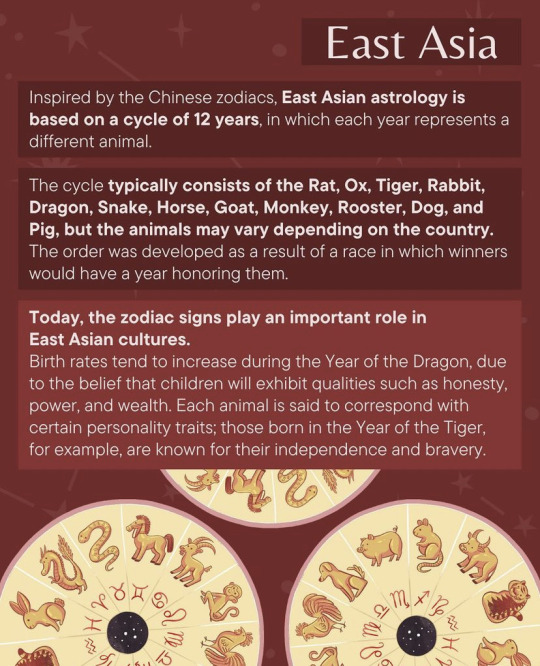
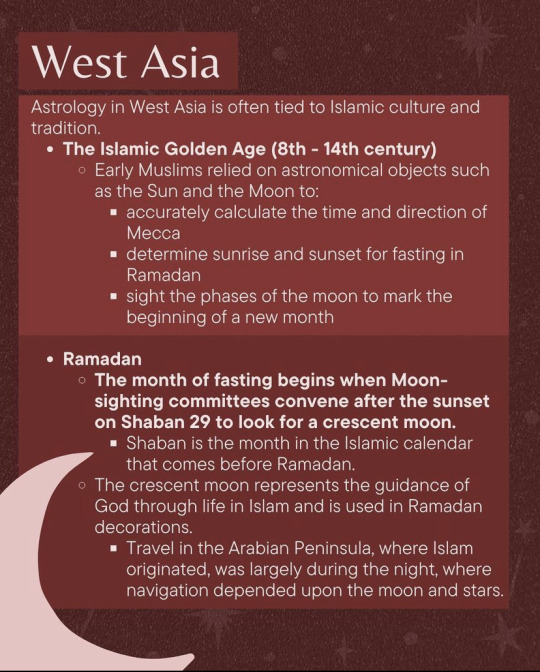




Astrology Across Asia by DearAsianYouth
#DearAsianYouth#vedic astrology#hindusim#nakrashatas#witchblr#witch notes#astrology#astrology notes#astrology observations#astro notes#Asian Astrology#Centeral Asia#East Asia#South Asia#South East Asia#Astrology History#horoscope#Chinese Astrology#West Asia#Islam#Astronomy#Mecca
173 notes
·
View notes
Text
.
i was watching this video where the youtuber asks korean elders if they'd be okay with their kids marrying foreigners and the amount of white women i saw being like oh but my in laws are so nice to me!! yes good for you but i wish they'd keep in mind how their whiteness helps this + the fact that asians have this 'hierarchy' deeply interwoven into our history
#delete later#the hierarchy isnt me being dramatic btw theres even a whole bit on it in the introduction#for osamu dazai's no longer human#im not generalising at all i know a country's common views dont mean that everyone thinks the same#but it's also very obvious thatit goes east asia > southeast asia / south asia / west asia#li talks
8 notes
·
View notes
Text
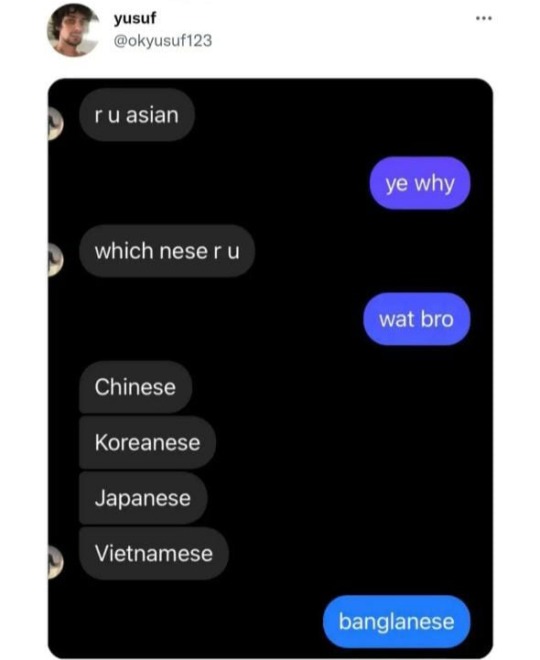
So... which nese r u?
#bengali#bangla#india#bangladesh#desi#asian#south asia#langblr#west bengal#bong's bongo#bengal#tripura#assam#meme#funny#ye a proud indian banglanese 😌
248 notes
·
View notes
Text

A common crow butterfly (Euploea core) extracts nectar from the blossom on a high branch of a moringa tree in West Bengal, India. The common crow butterfly belongs to the crows and tigers subfamily Danainae found from South Asia to Australia. As caterpillars, this species sequesters toxins from its food plant which are passed on from larva to pupa to the adult. While feeding, it is a very bold butterfly, taking a long time at each bunch of flowers
Photograph: Soumyabrata Roy/NurPhoto/Rex/Shutterstock
#soumyabrata roy#photographer#nurphoto#rex#shutterstock#common crow butterfly#butterfly#euploea core#nectar#moringa tree#west bengal#india#sanainea#south asia#australia#nature
19 notes
·
View notes
Text
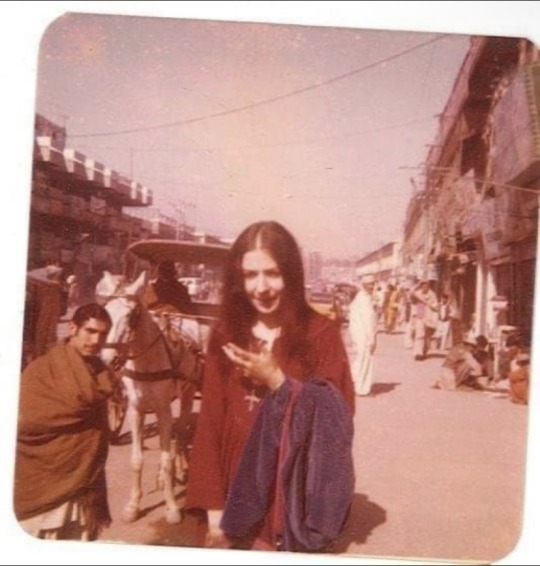
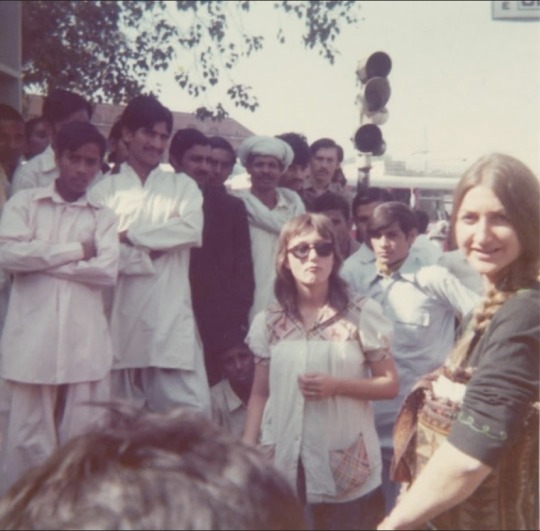




European tourists on the hippie trail in KPK, Pakistan in the 70s
#Pakistan#khyber pakhtunkhwa#my dad tells me about the hippies that used to come tho his village from all over mainly germany uk france tho#kpk#the hippie trail#Peshawar#pekhawar#nwfp#north west frontier province#own post#70s#south asia#photography
22 notes
·
View notes
Text
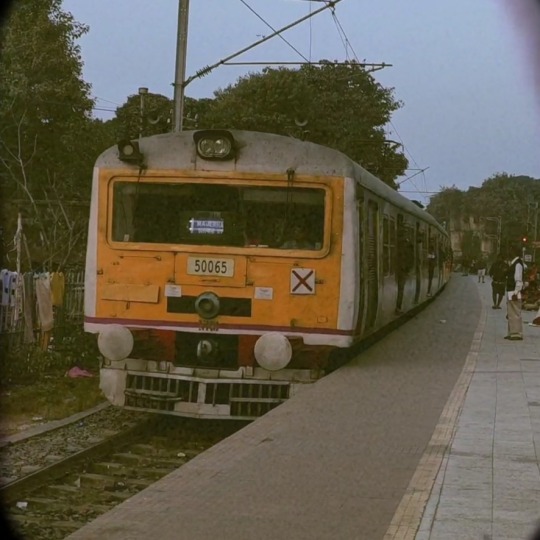

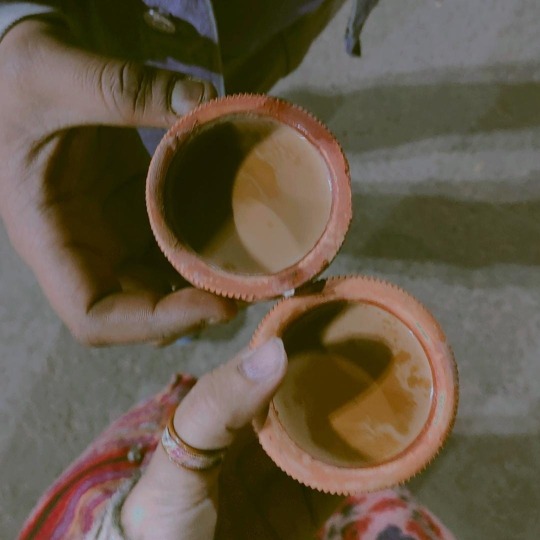

December in Calcutta.
#calcutta#kolkata#kolkata diaries#kolkata street photography#my photgraphy#original photography#kolkata moodboard#p#bangla tag#west bengal#desi#desi aesthetic#desi tumblr#desiblr#desi tag#india#south asia#desi moodboard
556 notes
·
View notes
Text
snapshot meme
@faux-fires has just tagged me and i am moving at the speed of lecturer with mail app on their phone. YOU'RE STILL NOT GETTING AWAY WITH NOT READING GOLDEN STAGE [insert barrage of eyes emojis]
favourite colour: subject to change and tbf i enjoy all colours. my "favourites" tend to be what i enjoy wearing atm, which in this case is like a walnutty brown
last song: joji's wanted u (from a playlist). we're seeing him live in november i'm so hyped!!!
currently reading: ummmmmmmm the bhagavad gita. for zukki fic research purposes (but also like, sanskrit literature and concepts are kinda fascinating me atm? the au is set in a world that's very much like an indianising southeast asia and i want to represent those cultures meaningfully...)
last movie: barbie movie! i really enjoyed it and found it unexpectedly thoughtful though i resonate with some of the critique that it should've been more about the gals than like. patriarchy
sweet/spicy/savoury: spicy/savoury. i put chulola in my mushroom pasta
currently working on: aforementioned zukki fic, which is in need of an irreverent working title. was sitting on a "zuko gets dped" idea for a while but couldn't figure out how to make it work in a way that was interesting to me in canon-verse. toyed around with the idea of wuxia, then "oh wuxia is historical right, how do i historicise atla world" and then landed on the khmer empire as the inspo. so yeah
tagging: @nopantsbroccoli @catilinas @summerstormsandnoodles @chiptrillino @adriancatrin @lizardlicks @owlask
#also tbh i enjoy getting out of the roman history rut?#my mphil awakened this interest in ancient histories outside the west#the philosophies at the foundation of hinduism and buddhism are so influential to SO many cultures in east southeast and south asia#but i've barely even scratched the surface in all my MANY years of schooling#it just seems remiss to not delve into them#and there's a great beauty to learning about these concepts. philosophies of how people have approached & dealt with life over 1000s of yrs
16 notes
·
View notes
Text

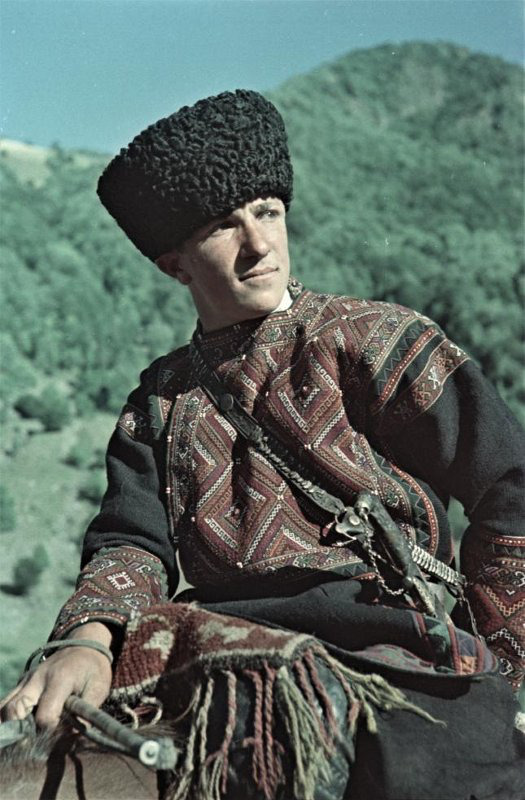




A series of photos from Khevsureti, Georgian SSR. Unknown photographer, 1957-1965
#khevsureti#georgia#south caucasus#caucasusmountains#caucasus#culture#kavkaz#caucasian#khevsur#west asia#eastern europe
7 notes
·
View notes
Text


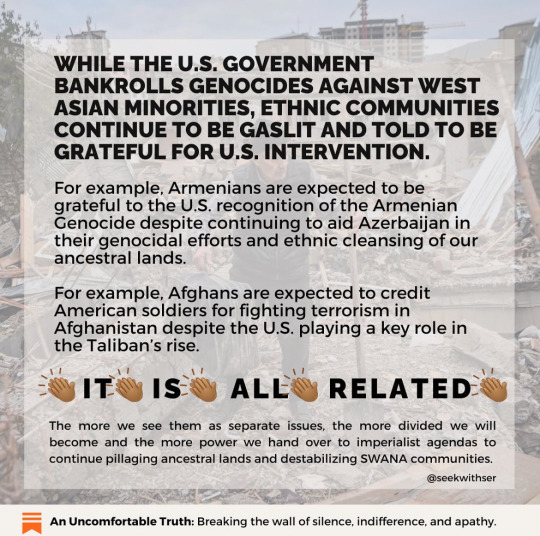
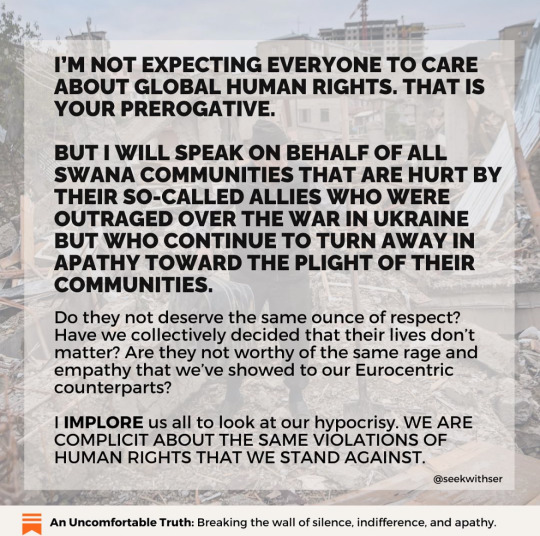
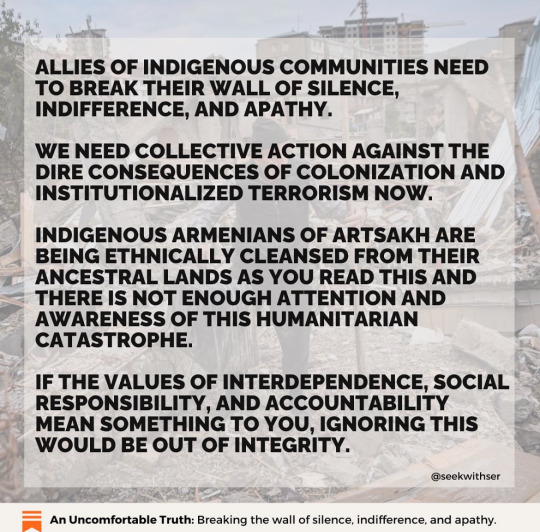

[ID: Screenshot of an Instagram post by @/SeekWithSer. The location reads, “Haut-Karabagh.” The title reads, “WHAT'S HAPPENING TO THE ETHNIC ARMENIANS IN NAGORNO-KARABAKH IS A RESULT OF THE WEST'S APATHY TOWARD S.W.A.N.A REGIONS.” The users Substack article is mentioned at the bottom, titled “Uncomfortable Truth: Breaking the wall of silence, indifference, and apathy.”
Slide 2 reads: I'LL NEVER FORGET WHAT SOMEONE (A WHITE PERSON) SAID WHEN I MENTIONED THE 2020 WAR IN NAGORNO-KARABAKH.
"ISN'T THERE ALWAYS CHAOS IN THOSE AREAS? IRAQ, AFGHANISTAN, THOSE PLACES ARE ALWAYS INFESTED WITH WAR AND DESTRUCTION."
This statement stuck with me because it represented the general apathy, indifference, and willful ignorance of the West toward countries we can't point to on the map whose names we can't pronounce.
And yet. AND YET. What we fail to realize (or conveniently ignore) is that our tax dollars are one of the most significant contributors to political and economic instability and PEACE in "those places."
Slide 3 reads: WHILE THE U.S. GOVERNMENT BANKROLLS GENOCIDES AGAINST WEST ASIAN MINORITIES, ETHNIC COMMUNITIES CONTINUE TO BE GASLIT AND TOLD TO BE GRATEFUL FOR U.S. INTERVENTION.
For example, Armenians are expected to be grateful to the U.S. recognition of the Armenian Genocide despite continuing to aid Azerbaijan in their genocidal efforts and ethnic cleansing of our ancestral lands.
For example, Afghans are expected to credit American soldiers for fighting terrorism in Afghanistan despite the U.S. playing a key role in the Taliban's rise.
IT IS ALL RELATED.
The more we see them as separate issues, the more divided we will become and the more power we hand over to imperialist agendas to continue pillaging ancestral lands and destabilizing SWANA communities.
Slide 4 reads: I'M NOT EXPECTING EVERYONE TO CARE ABOUT GLOBAL HUMAN RIGHTS. THAT IS YOUR PREROGATIVE.
BUT I WILL SPEAK ON BEHALF OF ALL SWANA COMMUNITIES THAT ARE HURT BY THEIR SO-CALLED ALLIES WHO WERE OUTRAGED OVER THE WAR IN UKRAINE BUT WHO CONTINUE TO TURN AWAY IN APATHY TOWARD THE PLIGHT OF THEIR COMMUNITIES.
Do they not deserve the same ounce of respect?
Have we collectively decided that their lives don't matter? Are they not worthy of the same rage and empathy that we've showed to our Eurocentric counterparts?
I IMPLORE us all to look at our hypocrisy. WE ARE COMPLICIT ABOUT THE SAME VIOLATIONS OF HUMAN RIGHTS THAT WE STAND AGAINST.
Slide 5 reads: ALLIES OF INDIGENOUS COMMUNITIES NEED TO BREAK THEIR WALL OF SILENCE, INDIFFERENCE, AND APATHY.
WE NEED COLLECTIVE ACTION AGAINST THE DIRE CONSEQUENCES OF COLONIZATION AND INSTITUTIONALIZED TERRORISM NOW.
INDIGENOUS ARMENIANS OF ARTSAKH ARE BEING ETHNICALLY CLEANSED FROM THEIR ANCESTRAL LANDS AS YOU READ THIS AND THERE IS NOT ENOUGH ATTENTION AND AWARENESS OF THIS HUMANITARIAN CATASTROPHE.
IF THE VALUES OF INTERDEPENDENCE, SOCIAL RESPONSIBILITY, AND ACCOUNTABILITY MEAN SOMETHING TO YOU, IGNORING THIS WOULD BE OUT OF INTEGRITY.
Slide 6 is a painting of an Armenian woman with tape across her mouth that reads “terrorist.” At the top, it reads: “seekwithser.substack.com.”
/End ID.]
#instagram#armenia#azerbaijan#artsakh#nagorno karabakh#indigenous#swana#southwest asia#south asia#west asia#north africa#bipoc#resources
52 notes
·
View notes